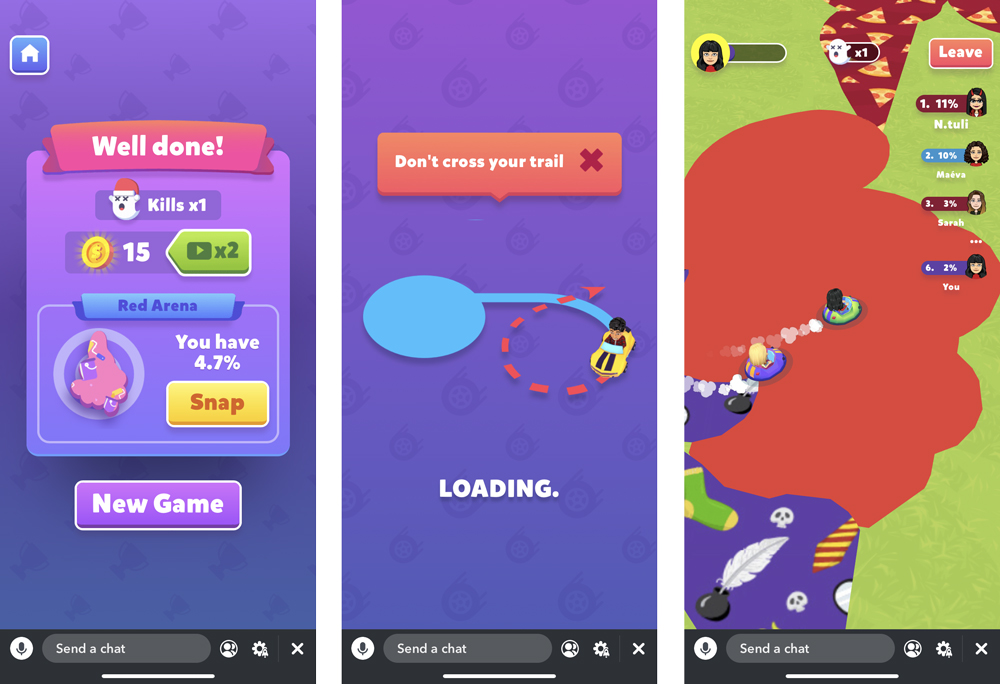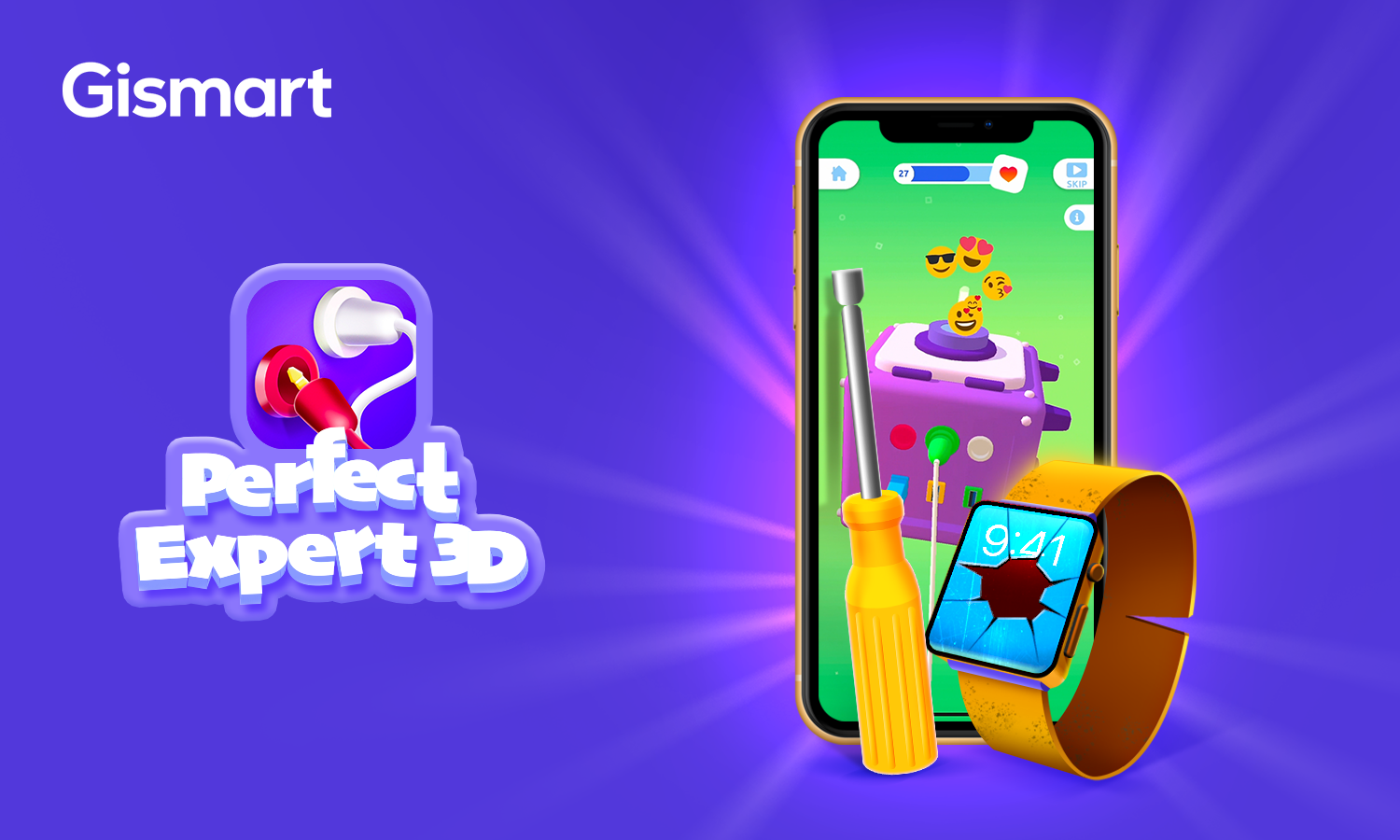Gismart case: publishing on the Snapchat gaming platform
Gismart shared the history of partnership with the Snapchat platform: how it was possible to enter the platform, what results to achieve and what conclusions to come to.
 Alexey Avdey, Head of the HTML5 direction of GismartBeginning
Alexey Avdey, Head of the HTML5 direction of GismartBeginning
Snapchat announced the launch of Snap Games in April 2019. We were immediately interested in the platform’s capabilities.
The fact is that by that time we already had experience of cooperation with the company regarding the purchase of traffic. And we were very pleased with this experience.
For example, our Cool Goal!, which became number one in 55 countries, performed best on Snapchat.
We quickly reached out to the Snap Games team with a partnership offer. We were told about the requirements for future projects and we went to prepare concepts for pitching.
Requirements
It will not be possible to find all the requirements for future projects in the public domain, as well as the contact of the Snap Games manager. The platform prefers to work with all teams directly and not to put the acceptance of applications “on stream”.
There is a reason for this approach. Snap Games’ priority is not the number of published products, but their quality.
At the same time, the formal set of requirements for incoming pitches/ projects is not kept secret. The game should be:
- multiplayer;
- developed on the Playcanvas engine;
- unique;
- created specifically for Snap Games;
- support Bitmoji.
Pitching concepts
We have been preparing for pitching projects for about a month. This time was mainly spent on market analysis, elaboration of ideas and preparation of the concepts themselves.
The decision on the concept is made by the product team of the platform, which is based in Los Angeles.
It is important that the game:
- it was suitable for the existing Snapchat audience (the audience of the platform is female, the main age is 18-34 years old);
- it did not overlap in mechanics with existing games on Snap Games.
We offered Snap Games several concepts at once.
We have been waiting for a response from the product team for about 2 weeks.
One of the games was “deployed” precisely because, according to the product team, it would not be able to engage the Snap Games audience (while the game was based on the mechanics of one of our Facebook hits). The other game was not approved because one of the platform’s partners had already taken on a project with similar mechanics.
Of the proposed concepts, only one was approved by the platform. We took him to work.
Game development
After agreeing on the concept, we began to build up a team for the project. And it wasn’t that easy to do. There are few specialists working on PlayCanvas on the market.
In the future , two things helped us significantly in the development:
- Snap Games has a special guideline that regulates all stages of development and approval of the game (there are six such stages in total, starting from the prototype review and ending with the global release);
- a great technical team of Snap Games, which was constantly in touch with us (this allowed us to solve all the issues that arose very quickly).
In total, it took about six months to create the first game under the partnership — Color Galaxy.
Color GalaxyGame Success
Since its global release in January 2020, the game has attracted 45 million unique players. At the same time, we did not purchase traffic for the game.
Then how did we achieve such indicators? It is important to keep in mind the following points:
- Snapchat’s DAU today is 265 million, a significant part of this audience goes to Snap Games;
- we became one of the first developers to release a game on the Snap Games platform;
- the game was actively featured on the platform (thanks to this, the DAU Color Galaxy peaked at 721 thousand);
- the game itself turned out to be viral.
Despite the fact that Color Galaxy was released more than a year ago, it still actively attracts organic traffic.
This is also due to the release of social features. For example, features such as in-game chat and voice communication with friends have significantly increased the length of gaming sessions.
And we, of course, make updates. They are mainly associated with holidays: Halloween, New Year, Valentine’s Day, St. Patrick’s Day, Easter.
Integration of new features from the platform also works well. For example, we were the first to integrate Snap Tokens into our game, due to which we got a good feature in the token store inside Snapchat. We have also integrated Bitmoji into the project very successfully.
Bitmoji
Bitmoji is an SDK that allows you to make your own three—dimensional Snapchat avatar, and then play it in projects hosted on Snap Games and on other platforms.
We became the first Snapchat partner to integrate Bitmoji into a mobile game. We can say that Gismart’s partnership with Snap went beyond Snap Games when we got the opportunity to integrate Bitmoji into our products.
We had a hypothesis that Bitmoji would positively affect both retention and the length of gaming sessions. It turned out to be true.
We tested it on one of our hits — Perfect Expert 3D. After adding Bitmoji to the project, both revenue (by 60%) and retention (by 20%) increased.
Therefore, we initially built Bitmoji into Color Galaxy: we put user avatars in cars (initially it was assumed that they would move without drivers) and made custom animations for each with the participation of a character.
A new stage of cooperation
The success of Color Galaxy (now it is the most successful gaming project on the Snap Games platform) has seriously affected the relationship between the companies. Six months ago, we signed an agreement to develop several more games for the platform. So the “experimental” cooperation between Gismart and Snap has grown into an expanded long-term partnership.
In February 2021, the second game from Gismart on Snap Games, Crazy Run, was released globally. To date, the game has more than 7 million users.
There are several more games in the plans.
Tips for those who want to start a collaboration with Snap Games
- You should have a well-coordinated team that already has solid experience working together. You have to convince Snap Games that you can work intensively and not “fall apart” in six months. For example, we have already had experience of launching successful HTML5 games on Facebook Instant Games. Our team at the start of the development of Color Galaxy consisted of 10 people (now – 25 people). Even in the concepts, we showed Snap Games that the level of art and graphics in our games is not inferior to that implemented by its internal development team (Bitmoji Party, Bitmoji Tennis, etc.).
- Snap Games today is a growing platform that is constantly changing, improving and, accordingly, experimenting a lot. This often requires additional effort and time resources. We need to be ready for this.
- Offer your games to one of those companies that already works with the platform, for example, on publishing terms. This will open the doors for you on Snap Games. Or try to find a company that already works with the platform and can make you an intro. It’s always easier to get in touch through a recommendation.



